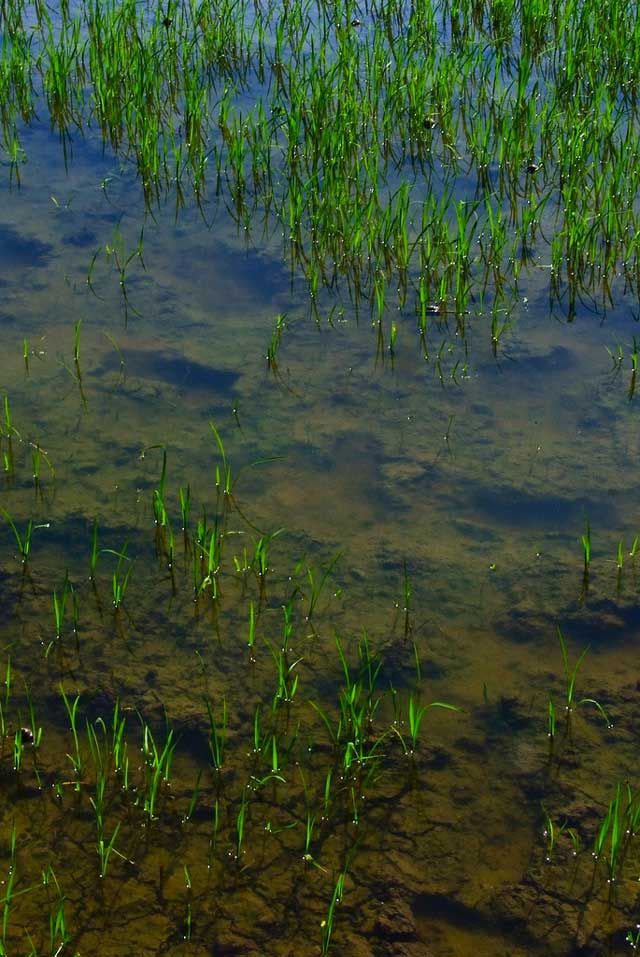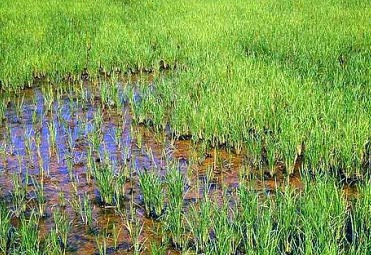Poor seed distribution
 What it does
What it does
When seeds are poorly distributed, either crop stand of plants becomes too dense or have spaces in between when plants are too few. Weeds also grow and compete with the crop for nutrients.
Why and where it occurs
Crop density is a problem of direct-seeded fields, especially when broadcasted. Crops can be surface-broadcasted (wet or dry), drill-seeded (using machines) or broadcast and incorporated when sown on dry fields. Pre-germinated seed is typically used when wet direct seeding.
Direct-seeded fields tend to have greater problems of lodging, especially when the seed is surface-sown. When seeds are broadcast, fields can have patches of either too many or too few plants depending on the skills of the broadcaster and the soil conditions where the seed lands. Farmers often use high seed rates due to poor seed quality, to compensate for losses to rats, birds and snails, and to increase crop competition with weeds.
How to identify
Check the field for the following:
- Plant count too high (e.g., > 250 plants per m2) or too low (e.g., < 75) in direct-seeded fields
- When too close, plants could have thin stems and possibly lodge
- When too few plants, there would be spaces in the crop, weeds could grow and yield potential could be lost
The pattern of damage is usually uneven across the field.

There are various problems affecting crop establishment. These are cloddy soil, seed too deep, soil too soft at seeding, poor emergence in low spots in fields, heavy rainfall at seeding, soil crusting, poor seed quality, low seed rate, water stress, muddy water at seeding, clogged seeder and/or pests such as ants, birds and rats that remove seed at planting.
To confirm the cause of problem, check or ask the farmers about seed rate and how the crop was planted.
Why is it important
Economic costs can be direct in terms of yield lost due to poor crop stand (too many or too few plants) or through the increased cost of seed when high seed rates are used.
How to manage
- For good establishment, manage water properly and ensure well leveled water, allowing water to settle
- Ensure an appropriate seed rate with even distribution of seed
- Crop stand should be of the order of 100 to 200 plants per m2, use seed rates between 40−100 kg per ha